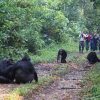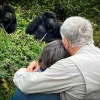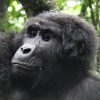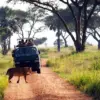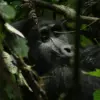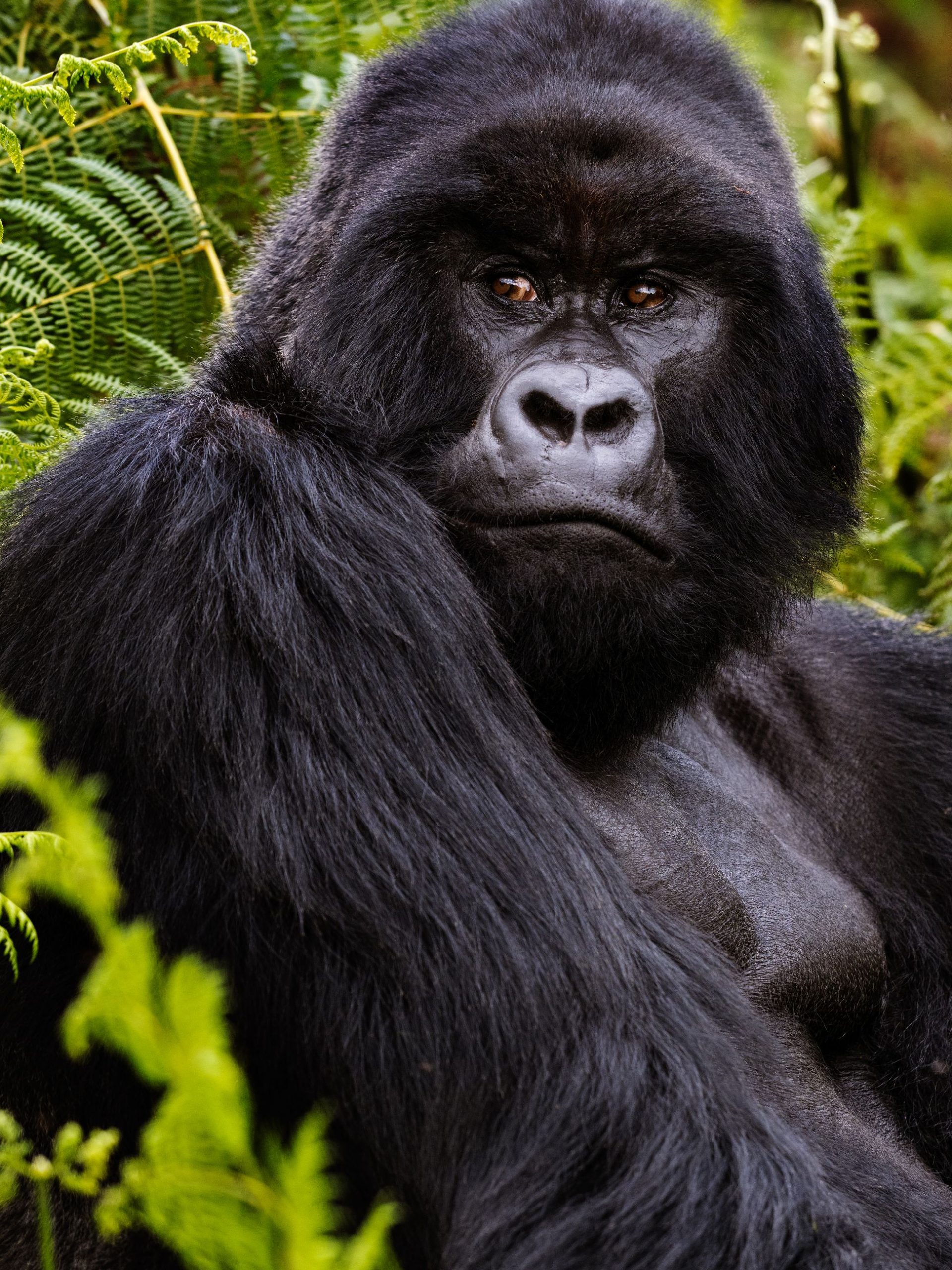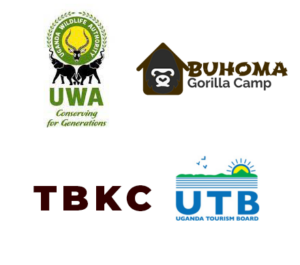Yes, you can do Chimpanzee trekking in Murchison Falls National Park, but not in the park’s central savannah area. Chimpanzee trekking is conducted in the Murchison Falls Conservation Area, specifically in the Budongo Forest Reserve, which is adjacent to the park, particularly at the Kaniyo Pabidi and Busingiro Eco-tourism sites.
Murchison Falls National Park is Uganda’s largest National Park and a premier safari destination, offering diverse wildlife, including the Big Five (elephant, leopard, buffalo, lion) and the rare bird species, the Shoebill stork. It is known for its strongest waterfall, which attracts tourists from different countries and regions to come experience various activities like boat cruises to the base of the falls, where the Nile is squeezed through a narrow gorge, and game drives on its northern plains.
Murchison Falls National Park offers an exciting opportunity for chimpanzee trekking in the Budongo forest, a tropical rainforest located in the park’s southern sector. This activity allows you to get up close and personal with the fascinating primates in their natural habitats.
When is the Best Time for Chimpanzee Trekking?
Chimpanzee trekking in Murchison Falls National Park can be best done during the dry seasons, which vary from June to September and December to February, whereby during this period, the trails are dry and accessible, which makes it easier to track the chimpanzees. However, chimpanzee trekking is possible throughout the year.
Budongo Forest Reserve is a hidden gem for primates located in the southwestern part of Murchison Falls Conservation Area, known to be the largest natural forest in Uganda, covering 825 square kilometres. It’s a home of over 700 chimpanzees with one habituated group for trekking. Budongo offers a more serene, less crowded trekking experience compared to other places like Kibale Forest National Park.
Chimpanzee Trekking Experience
The chimpanzee trekking experience typically lasts between 1 and 4 hours, depending on the location of the chimpanzees, where you will have 1 hour to observe and interact with them. This activity is done with the guidance of a park ranger guide who helps you in the tracking of chimpanzees and also provides quality information and insights into their behaviour and habitat.
How much does a chimpanzee trekking permit cost?
The chimpanzee trekking permit can be obtained directly from the Uganda Wildlife Authority or through a trusted tour operator. Only 16 permits are issued daily; therefore, it is advised to book in advance. The permit costs $130 USD for foreign non-residents per person authorised to a minimum age of 15 years old.
Combine chimpanzee trekking with a classic safari.
After chimpanzee trekking, combine it with various activities done in the park, for example boat cruise to the base of Murchison Falls, game drives to see lions, elephants, giraffes, buffaloes, antelopes, hippos, and a lot of bird species over 360, including the rare Puvel’s illadopsis, plus also hike to the top of the falls for incredible views.
Wildlife encounters beyond Chimps: While trekking, you might also spot black and white colobus monkeys, red-tailed monkeys, blue monkeys, and so many others.
Chimpanzees Vs Gorillas: How the trekking experiences differ?
Chimpanzee trekking
- Behaviour: Chimpanzees are actively swinging in the trees, interacting dynamically, and using tools. Here, trekkers hear them even before seeing them.
- Trek experience: The chimpanzee trek can be less physically demanding, but it requires keeping up with the fast-moving tree-dwelling chimps.
- Cost: Chimpanzee permits are more affordable.
- Habitat: Chimpanzee habitats are typically dense in lower-altitude forests, for example, those in Kibale National Park.
- Structure (Social): Chimps are loud and energetic when it comes to social interactions, and their troops are also larger.
Gorilla trekking
- Behaviour: Mountain Gorillas are calm and peaceful, hence their serene presence.
- Trek experience: The trek is physically challenging because of the rugged terrain, which is known as impenetrable.
- Cost: Gorilla trekking permits are more expensive than those of chimpanzees.
- Habitat: Mountain Gorillas are found in mountainous, steep terrains of national parks, for example, Bwindi Impenetrable National Park and Mgahinga Gorilla National Park.
- Social structure: Mountain Gorillas live in stable small family groups led by a dominant Silverback.
Similarities between Chimpanzee trekking and Gorilla trekking
Observation in natural habitats: Chimpanzees and Gorillas are observed in their natural forest habitats, giving opportunities to trekkers to learn more about their behaviours and social interactions.
Permits and Guides: Both activities are led by experienced guides or rangers, and they all require permits to track the primates in small groups.
Endangered species: Both chimps and gorillas are endangered species.
Conservation Rules: Regulated rules for both activities in the conservation areas are set, including maintaining a safe distance of at least 7 meters from the primates, prohibiting the use of flash cameras, and not feeding them.
Gears: For both treks, appropriate gears are required, including sturdy hiking boots, long-sleeved trousers and shirts, rain jackets, and binoculars or cameras.
Viewing Time: Trekkers are given a period of time to observe the primates, and this is around one hour to avoid overexposure to humans.
Certificates: At the end of both treks, certificates are given out to each person who has taken part in the activity.
Where to stay during your Chimpanzee Trekking Safari In Murchison Falls
Murchison Falls National Park offers various accommodation options ranging from budget-friendly to luxury lodges, and here are some of the popular accommodation options:
Paraa Safari Lodge: it’s a luxury lodge located on the banks of the Nile River.
Parkside Safari Lodge: it’s a comfortable lodge with stunning and serene views of the surrounding landscapes and rainforests.
Budongo Eco Lodge: it’s a mid-range lodge located near the park’s entrance via Kichumbanyobo gate.
Tips and preparations
- Respect the chimpanzees by keeping a safe distance, avoiding feeding them, and following the guide’s instructions.
- Bring essentials like insect repellants, a hat, sunglasses, and a rain jacket.
- Dress appropriately, for example, sturdy hiking boots, long-sleeved shirts, and long trousers.
- Stay hydrated by bringing a water bottle throughout the chimpanzee trek.
What to pack
- Hiking boots
- Long-sleeved clothes
- Insect repellent
- Binoculars
- Torch
- A good camera
- Rain jacket (just in case)
- Water bottle


